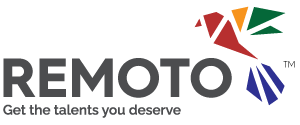The modern workplace is underground a transformation, with remote work emerging as a trend that reshape how businesses operate and how employees engage with their tasks.
This evolution toward remote work has been propelled by advancements in technology and a growing emphasis on work-life balance, leading to a paradigm shift in what it means to “go to work”.
As companies worldwide adapt to this change, the focus has shifted towards ensuring that remote work is not merely an alternative to traditional office settings but a sustainable, long-term strategy.
This blog post explores the balance require to maintain productivity, foster employee well-being, and use technology effectively to within the remote work model. By examining critical elements that contribute to the success and sustainability of remote work, we provide insights for businesses navigating this new era.
The Digital Backbone: Technology and Remote Work
The viability and effectiveness of remote work are deeply rooted in the technological advancements that have shaped the modern workplace.
High-speed internet connections and cloud-based platforms have transformed the office, as a concept, changing any space with internet access in a potential hub of productivity and collaboration.
This digital transformation has allowed teams spread across different locations to work together as if they were in the same room, breaking down barriers of distance and time zones.
For example, Karen Rogers notes that technological innovation has significantly advanced remote work. What was once confined to specific professions, requiring intricate setups and facing issues with inconsistent connectivity, has now transformed. Technology has made remote work widely accessible and smooth, enhancing its feasibility across various sectors.
However, the foundation of remote work goes beyond mere connectivity. The sustainability of this work model depends on the strategic implementation and integration of technology in every step of work processes.
Now, companies are tasked with the challenge of selecting and deploying a suite of secure and reliable tools that cater the basic requirements of communication, project management, and the unique demands and challenges faced by remote teams. This includes:
- Ensuring data security and privacy
- Providing platforms that facilitate efficient project tracking and management
- Offering solutions that promote collaboration and creativity among team members
Investment in the right technology stack is also crucial. This involves choosing software and tools that are both functional and user friendly, to minimize the learning curve and enhance productivity. Video conferencing tools, instant messaging platforms, projet management application, and cloud storage services form the core of remote work technology.
If you’re interested in incorporate technology to your digital workspace, you can consider specialized tools tailored to your industry, whether that be:
- Design software for creatives
- Development environments for tech teams
- CRM systems for sales and marketing professionals
Equally important is the support and training for these technologies. Remote employees and teams need to feel confident in using these tools to their full potential, which requires:
- Access to training resources
- Tutorials
- Help desks
Regular updates and feedback sessions can help in identifying any gaps or issues in the technology stack, allowing for continuous improvement and adaptation to the evolving needs of the workforce.
In addition, companies need to recognize that technology facilitate tasks, becoming a critical component of employee engagement and remote company cultures. Virtual team-building activities, online workshops, and digital “off-site” events are important in maintaining a sense of belonging and community among remote workers.
In other words, the sustainability of remote work is linked to the strategic selection, implementation, and management of technology. It’s about creating a digital ecosystem that supports operations needs and, at the same time, the well-being and development of the workforce.
Beyond the Screen: Prioritizing Well-Being
The integration of technology into every aspect of remote work brings undeniable benefits in terms of flexibility and efficiency. However, this digital immersion also presents challenges to the well-being of employees.
The convenience of working from any location can obscure the boundaries between professional and personal life, increasing the risk of burnout, isolation, and mental fatigue. Addressing these challenges requires a proactive approach to well-being within the digital workspace.
Creating a culture that elevates the importance of well-being involves more that just acknowledging its significance. It requires strategies and policies. For instance, employers can encourage regular breaks by implementing regular schedules that include:
- Time away from screens
- Promoting the idea that bracks enhance productivity rather than detract from it
These pauses in the workday can be structured as “well-being breaks.” You can encourage your remote employees to step way from work, engage in physical activities, or practice mindfulness exercises.
Promoting physical activity is another key component of supporting well-being in remote work settings. You can:
- Offer virtual fitness classes
- Subsidize gym memberships
- Introduce challenges and incentives for remote employees to stay active
Encourage physical wellness supports health and contributes to mental well-being. By doing this, you can mitigate feelings of isolations and monotony in the workplace.
Access to mental health resources is equally important. You can provide comprehensive mental health support that includes:
- Counseling services
- Stress management programs
- Training sessions on coping mechanisms
For this, you can partner with mental health online platforms that offer online consultation and therapy sessions. As a result, you can discuss mental health issues openly with your employees. They will seek help when needed.
Personal support and flexibility play a crucial role in employee well-being, recognizing that each employee situation is unique, especially in a remote work setting. Be sure to include flexible working arrangements that accommodate different time zones, family responsibilities, and personal preferences.
Regular check-ins by managers and team leaders can help assess individual needs and adjustments, ensuring employees feel valued and supported as individuals. Therefore, focusing on well-being in the digital workspace is about more than just giving out tools for remote work. It’s crucial to create an environment that really supports the overall health of remote employees.
By incorporating these practices into your company’s culture, you do more than increase productivity; you also ensure that your team excels in all aspects of their lives. This all-around approach makes remote work a lasting and successful part of your business, where employees do more than just work—they thrive.
This showcases what’s possible when a remote workforce is fully supported.
Ready to elevate your knowledge on fostering well-being in the workplace? Dive into our insightful TED talk now and transform your approach!
Takeaway
The ongoing transition to remote work is not merely a shift in location but a comprehensive transformation that demands a nuanced understanding of technology and well-being. The journey towards a sustainable remote work model is paved with the integration of advanced technologies and a deep commitment to the holistic health of employees.
By thoughtfully adopting digital tools that facilitate seamless communication and collaboration, alongside fostering an environment that prioritizes mental and physical well-being, businesses can unlock the full potential of their remote workforce.
This balanced approach ensures that remote work transcends being an alternative to traditional office setups, evolving into a viable, long-term strategy. It’s clear that the future of work hinges on our ability to harness technology wisely while nurturing an organizational culture that values and supports the well-being of every employee.
As we navigate this new era, the insights and strategies discussed here can guide businesses towards creating a remote work environment that is not only productive but also enriching, sustainable, and fulfilling for all involved.














